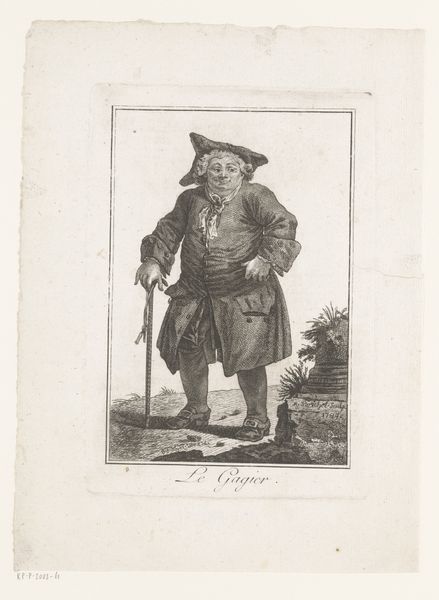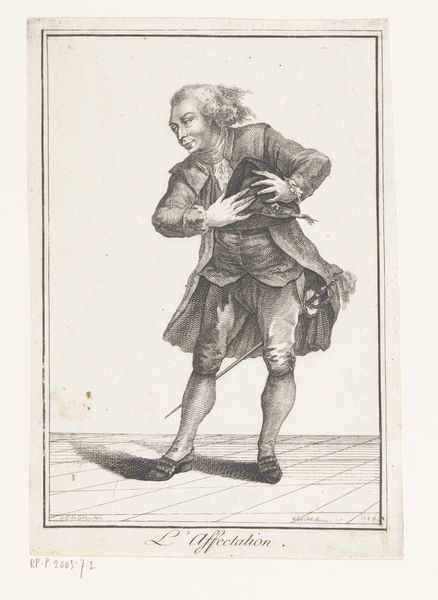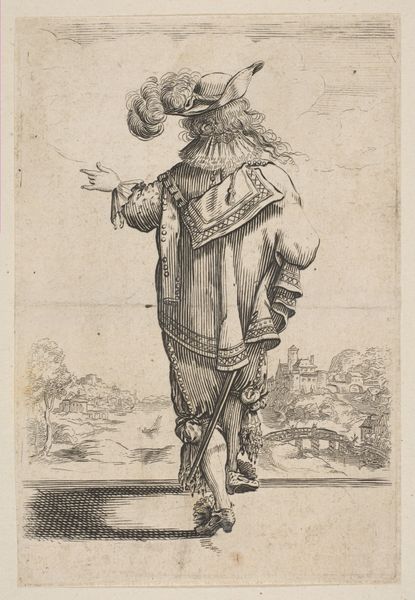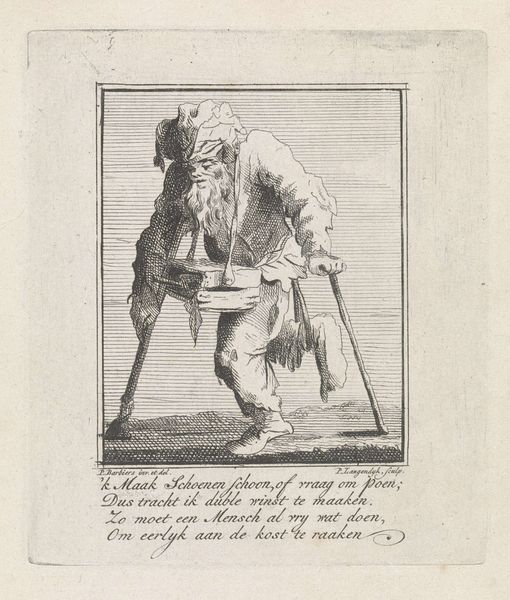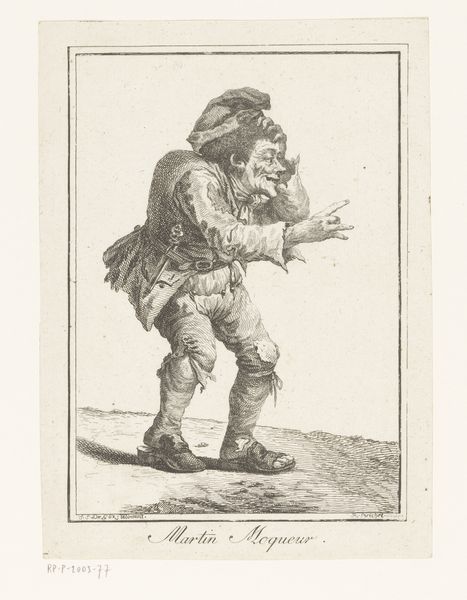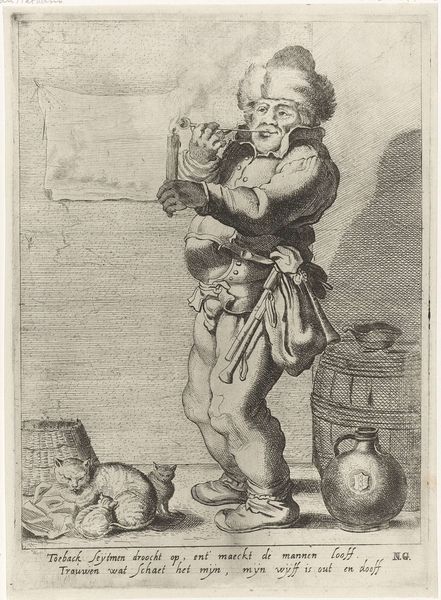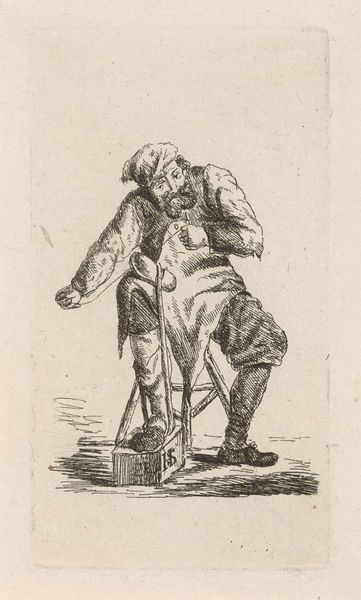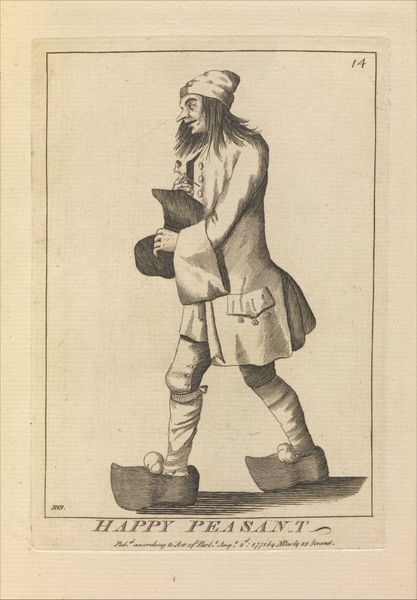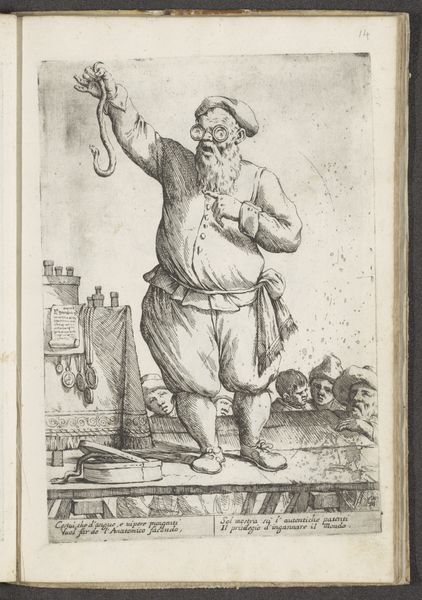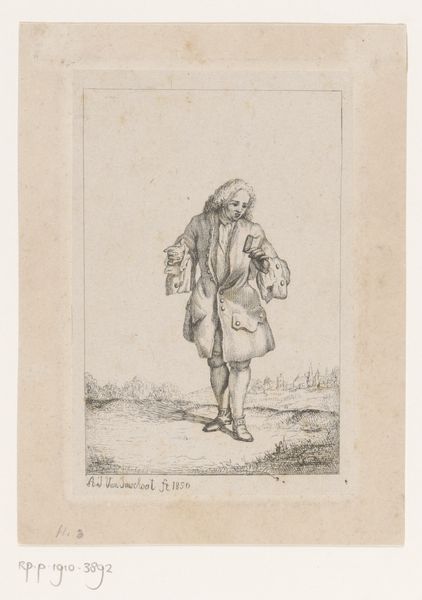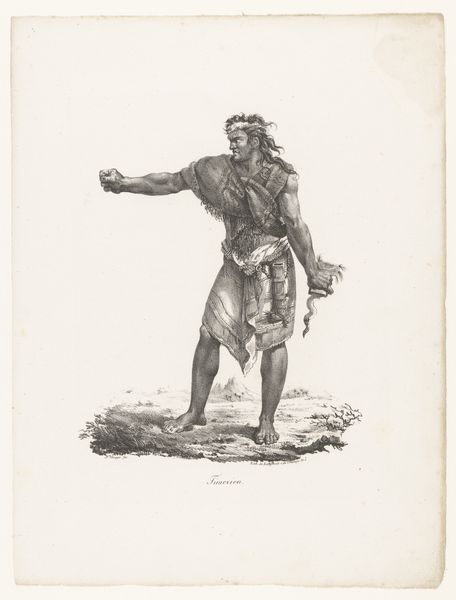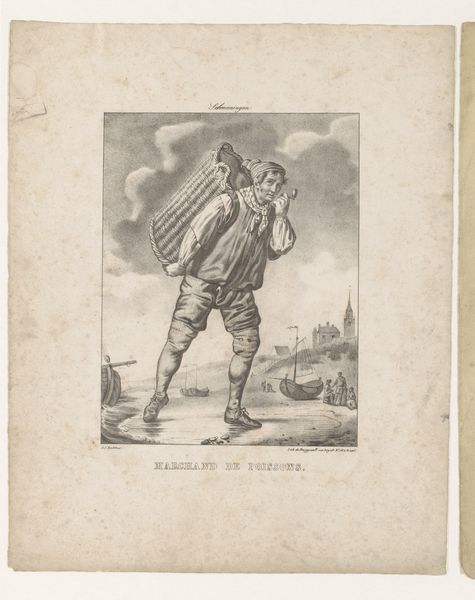
Dimensions: height 226 mm, width 162 mm
Copyright: Rijks Museum: Open Domain
Editor: This is "Dronkaard met geheven glas," or "Drunkard with Raised Glass," an engraving by Robert Brichet from 1784, currently held at the Rijksmuseum. I’m immediately struck by how detailed the rendering of his tattered clothes and the barrel are, but it’s also quite comical. What's your take on this piece? Curator: The rendering indeed foregrounds process. Think of the artist grappling with the burin, incising lines into the copperplate to depict not just the man, but also the worn surfaces of his garments, the coarse texture of the barrel. What kind of labor does that communicate? Editor: It speaks to me about long hours spent meticulously creating this image, contrasting with the seemingly effortless consumption displayed in the image. The excess versus the toil, perhaps? Curator: Precisely. Look closer: the barrel, tools for tapping the wine, even the spilled liquid. It all points towards the means of production and the raw materials that support this character's consumption. Where does the wealth to acquire and enjoy such items come from? Who benefits from the production process? Editor: So, you’re seeing the print not just as an isolated artwork, but as part of a larger system of production and consumption. Are you suggesting the artist is making a commentary on the social disparities of the time through the material details in the engraving? Curator: I think it invites us to consider it. Caricature often served as social commentary, poking fun at societal figures. Brichet isn't just showing us a drunk; he is showing us the outcome of specific material and economic conditions, making us complicit as viewers. The very act of producing and acquiring art involves materials, processes and societal structures that are themselves worthy of our scrutiny. What’s changed and what hasn’t, you think? Editor: I never thought about approaching 18th-century art from a materialist perspective. It highlights how the making and enjoyment of art, even a seemingly simple print, are tied to complex economic and social realities that resonate even today.
Comments
No comments
Be the first to comment and join the conversation on the ultimate creative platform.
